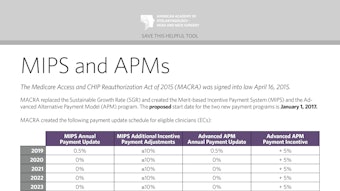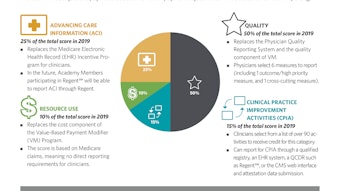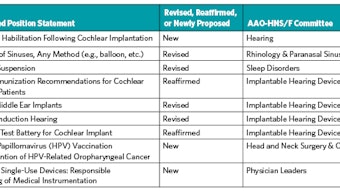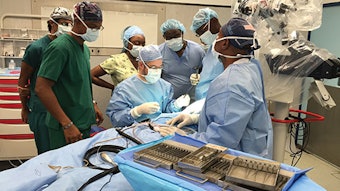What Is Post-Nasal Drip
Glands in your nose and throat continually produce mucus (one to two quarts a day). Mucus moistens and cleans the nasal membranes, humidifies air, traps and clears inhaled foreign matter, and fights infection. Although it is normally swallowed unconsciously, the feeling of it accumulating in the throat or dripping from the back of your nose is called post-nasal drip.

What Causes Abnormal Secretions?
Thin secretions
Increased thin clear secretions can be due to colds and flu, allergies, cold temperatures, bright lights, certain foods/spices, pregnancy, and other hormonal changes. Various drugs (including birth control pills and high blood pressure medications) and structural abnormalities can also produce increased secretions. These abnormalities might include a deviated or irregular nasal septum (the cartilage and bony dividing wall that separates the two nostrils).
Thick secretions
Increased thick secretions in the winter often result from dryness in heated buildings and homes. They can also result from sinus or nose infections and allergies, especially to foods such as dairy products. If thin secretions become thick and turn green or yellow, it is likely that a bacterial sinus infection is developing. In children, thick secretions from one side of the nose can mean that something is stuck in the nose such as a bean, wadded paper, or piece of toy. If these symptoms are observed, seek a physician for examination.
How Is Swallowing Affected?
Swallowing problems may result in accumulation of solids or liquids in the throat that may complicate or feel like post-nasal drip. When the nerves and muscles in the mouth, throat, and food passage (esophagus) aren’t interacting properly, overflow secretions can spill into the voice box (larynx) and breathing passages (trachea and bronchi), causing hoarseness, throat clearing, or coughing.
Several factors contribute to swallowing problems:
- With age, swallowing muscles often lose strength and coordination, making it difficult for even normal secretions to pass smoothly into the stomach.
- During sleep, swallowing occurs much less frequently, and secretions may gather. Coughing and vigorous throat clearing are often needed upon waking.
- When nervous or under stress, throat muscles can trigger spasms that make it feel as if there is a lump in the throat. Frequent throat clearing, which usually produces little or no mucus, can make the problem worse by increasing irritation.
- Growths or swelling in the food passage can slow or prevent the movement of liquids and/or solids.
Swallowing problems may also be caused by gastroesophageal reflux disease (GERD). This is a backup of stomach contents and acid into the esophagus or throat. Heartburn, indigestion, and sore throat are common symptoms. GERD may be aggravated by lying down, especially following eating. Hiatal hernia, a pouch-like tissue mass where the esophagus meets the stomach, often contributes to the reflux.
How Is The Throat Affected?
Post-nasal drip often leads to a sore, irritated throat. Although there is usually no infection, the tonsils and other tissues in the throat may swell. This can cause discomfort or a feeling that there is a lump in the throat. Successful treatment of the post-nasal drip will usually clear up these throat symptoms.
How Is It Treated?
A correct diagnosis requires a detailed ear, nose, and throat exam, and possibly laboratory, endoscopic (procedures that use a tube to look inside the body), and x-ray studies. Treatment varies according to the following causes:
- Bacterial infections are treated with antibiotics. These drugs may only provide temporary relief. In cases of chronic sinusitis, surgery to open the blocked sinuses may be required.
- Allergies are managed by avoiding the causes. Antihistamines and decongestants, cromolyn and steroid (cortisone type) nasal sprays, and other forms of steroids may offer relief. Immunotherapy, either by shots or sublingual (under the tongue drops) may also be helpful. However, some older, sedating antihistamines may dry and thicken post-nasal secretions even more; newer nonsedating antihistamines, available by prescription only, do not have this effect. Decongestants can aggravate high blood pressure, heart, and thyroid disease. Steroid sprays may be used safely under medical supervision. Oral and injectable steroids rarely produce serious complications in short-term use. Because significant side-effects can occur, steroids must be monitored carefully when used for more than one week.
- Gastroesophageal reflux is treated by elevating the head of the bed six to eight inches, avoiding foods and beverages for two to three hours before bedtime, and eliminating alcohol and caffeine from the daily diet. Antacids such as Maalox®, Mylanta®, Gaviscon®, and drugs that block stomach acid production such as Zantac®, Tagamet®, or Pepcid®may be prescribed. If these are not successful, stronger medications can be prescribed. Trial treatments are usually suggested before x-rays and other diagnostic studies are performed.
General measures that allow mucus secretions to pass more easily may be recommended when it is not possible to determine the cause. Many people, especially older persons, need more fluids to thin out secretions. Drinking more water, eliminating caffeine, and avoiding diuretics (medications that increase urination) will help. Mucous-thinning agents such as guaifenesin (Humibid®, Robitussin®) may also thin secretions. Nasal irrigations may alleviate thickened secretions. These can be performed two to four times a day either with a nasal douche device or a Water Pik® with a nasal irrigation nozzle. Warm water with baking soda or salt (. to 1 tsp. to the pint) or Alkalol®, a nonprescription irrigating solution (full strength or diluted by half warm water), may be helpful. Finally, use of simple saline (salt) nonprescription nasal sprays (e.g., Ocean®, Ayr®, or Nasal®) to moisten the nose is often very beneficial.
Sinus Conditions
Sinuses are air-filled cavities in the skull. They drain into the nose through small openings. Blockages in the openings from swelling due to colds, flu, or allergies may lead to acute sinus infection. A viral cold that persists for 10 days or more may have become a bacterial sinus infection. This infection may increase post-nasal drip. If you suspect that you have a sinus infection, you should see your physician to see if it needs antibiotic treatment.
Chronic sinusitis occurs when sinus blockages persist, causing the lining of the sinuses to swell further. Polyps (growths in the nose) may develop with chronic sinusitis. Patients with polyps tend to have irritating, persistent post-nasal drip. Evaluation by an otolaryngologist may include an exam of the interior of the nose with a fiberoptic scope and CAT scan x-rays. If medication does not relieve the problem, surgery may be recommended.
Vasomotor rhinitis describes a nonallergic hyperirritable nose that feels congested, blocked, or wet.
Download a pdf of “What Is Post-Nasal Drip.”












